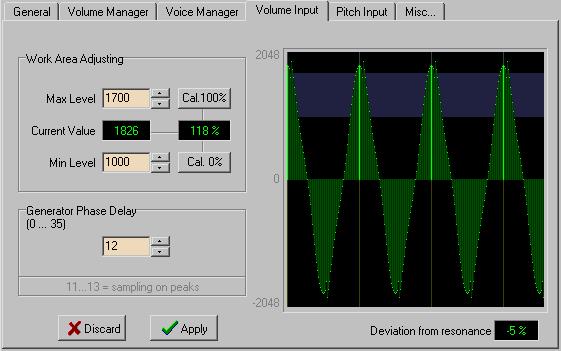Many thanks for taking the time to look over my blurb, Roy! ;-)
Yeh, I love knobs - loads of them, everywhere! But (apart from in the analogue synth world) they seem to be regarded as clumsy - I think it may be a British thing (perhaps - although Bob wasnt British..) We were slapping 4 knobs for channel EQ on mixing consoles when everyone else had at best a simple tone control.. Funny to see the "British EQ" of the 60's being touted on modern mixers from Germany and America!
I HATE almost every DUI I have ever had to use - The main reason I originally got the BCR-2000 was to have knobs for my soft-synths etc, and I have probably spent more on buying slider based (Fu**ing useless!) controllers for my digital synths (Roland D110 etc) than on the synths themselves..
BUT..
In terms of cost and space, digital user interfaces win hands down - Particularly if they are crap with multiple menu levels and tiny display! - I would though still love to have a DX7 with every operator taken to a pot - One massive wall full of knobs! ;-)
Being realistic.. The theremin (unlike a synth) isnt a beast one tweeks during performance - you would only use the DUI to program the sounds into presets, and to access these presets during performance.
And in a way, this is the double whammy - its true for digital synths as well... You spend a day getting "used to" using the crap DUI and programming the presets to sound like you want - and all is fine thereafter, as you just switch between these presets... In this phase, having a simple knob free panel with one encoder you use to change presets is fine (unless like me you always want to be fiddling with knobs in real time)..
Problem comes when in 8 months you dont like a few of your presets, want to edit them, but have forgotten how (particularly if youve been going through the whole process using other equipment with different awful DUI's) and it takes 1/2 a day to edit 3 presets!
So me thinks..
A "simple" theremin with perhaps maximum 24 knobs in total, some of these being small "trimmer" pots (functions like formant's with which one would set the "character" of your instrument but rarely change) and no preset memory, no DUI, no display, no MIDI.
Then an advanced theremin with only knobs for tuning/linearity/span/register and perhaps audio output level and preview, everything else resides in a moderately implemented DUI which usually just displays the preset number (and name?) and has an encoder normally assigned to this - but has a few buttons to allow you to select any parameter and edit it - this DUI also receives and transmits MIDI so knob twiddlers can buy a BCR-2000... Option 2 without any form of "DUI" isnt actually available I realized .. It needs to store the presets / edited values and enable to instrument to select a preset - this means that a minimum "UI" with encoder and display must be fitted - And if fitted, may as well add the ability to get to the parameters for those who want this - its not something I would use though, I would just leave it permanently on preset selection mode.
Looking at the BCR-2000 I wonder how, even with the huge sales, Behringer can put them out at anything close to the price! - People are hacking them to build step sequencers and lighting controllers and all sorts of other goodies because they are a tiny fraction of the price you would pay to buy the parts!
I just hope they dont get discontinued.
Fred.


